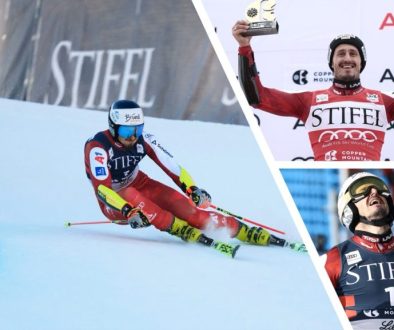About Seeding Systems
Seeding systems are a way of tracking and comparing race performances. In the UK we have our own national seeding system, but it is based on the same calculations applied internationally by FIS, the international snowsport governing body.
How do they work?
Every ‘registered’ racer starts their career with 999.99 ‘list’ points in each discipline (SL, GS, etc.). The underlying principle is that the fastest skier in the system has 0 list points: they are the ‘zero point racer’. Your list points are either your best point score, plus 10%, or the average of your best two scores. Seed lists are published periodically throughout the season, and your list points only change each time a list is published, based on points scored at races considered for that list. All the British seed list publication dates are available on GBSki annually, along with more information.
In the British system, there are three different lists:
- BASS (British Alpine Seeding System), for snow races
- BARTS (British ARTificial Seeding system), which has two separate lists:
- iBARTS, for indoor races
- oBARTS, for outdoor (dryslope) races
The lists are separate, and points are not comparable between lists/systems, because the surfaces really are quite different.
At FIS level, there is one list published periodically throughout the year.
How do I score points?
Fundamentally, a point score from a race is based on two things: how good the field of racers you competed against was, and how you did relative to the winner. If you win the race, but the field didn’t have particularly low points, you would probably score similarly to a race where you were quite far ‘off the pace’ (i.e. slower than the winner), but the field was very strong. The calculation works like this:
- The specific ‘F’ value for the discipline is divided by the winner’s time. This gives you ‘points per second’. You then multiply this by the how far behind the winner you were. These values are fixed for each season (and only ever change once every few seasons at most).
- A ‘penalty’ is calculated based on the list points of the best racers on the start list. For certain races, there is a minimum penalty above 0 (for various reasons). This penalty is added to your points to give you your point score from this race.
Minis races are not seeded, so minis cannot score points. There’s no need, since minis racing is all about fun! At U14 level, each individual race run is seeded separately – that’s why U14s always get to ski both runs. At U16 level and older, races are seeded based on combined times, so a DNF in either run means no result.
Are points important?
Yes and no. They are a useful comparison tool, a way of comparing your own performance against your own past performances, or of comparing one racer to another without them necessarily having competed in the same races all the time. However, it can be easy to get carried away! Some racers can become a bit obsessed over their points, which can add yet another element of pressure to the sport and ironically hinder performance.
Points are used to select racers to the national teams, though, so it’s understandable why some might fret about them. The governing bodies typically set points criteria for each year group which, if you meet, should grant you automatic selection to the team. It’s worth noting that neither the Scottish or British teams select based on BARTS points, since the teams are selected for training and competition on snow only.
Want to know more?
The British rules on seeded are defined in BCR Book III for snow, and BACR Book III for indoor/dryslope.

